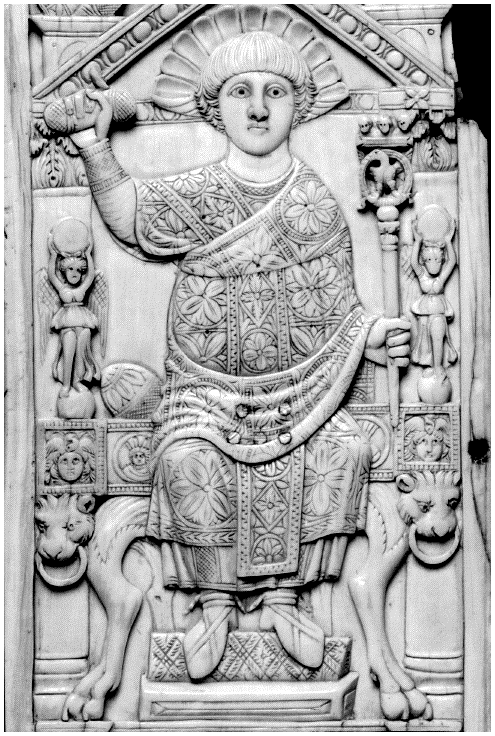Medieval and
Renaissance
Treasures
Paul Williamson,
Peta Motture,
Editors
(Victoria and Albert/Abrams)

The works here represented come from Europe, 300 A.D. - 1600 A. D. There are some strange objects indeed. There are footless birds, bird-headed griffins, and funny winged creatures including a "senmurv" which was supposed to have "the head and forepaws of a lion or dog, the wings of an eagle, and the tail feathers of a peacock. Variations of it appear seven times in this volume.
The names of these artifacts are ancient and wondrous: "crozier," "nautilus shell," "diptych," "censer," "tablemen," "casket" (not for the dead, but for moving about.) Some of the strangest humans represented can be fairly disgusting, if not comic. An enameled "plaque" of Samson from the twelfth century shows him ripping apart the lion's jaws with his hands while he is kicking the beast in the heart with his booties. A "reliquary casket" shows poor old Thomas à Becket getting his head chopped off by an indelicate swordsman.
Fat angels were evidently in much favor. Adipose cherubs decorate a 16th Century candlestick from Saint-Porchaire, France. A bowl from Naples gives us a gorgeous ring of stylized angelic fat kids gathering bunches of oranges. The message, according to the editors, was E no se po mangiare senza fatiga ("Please don't eat the daisies..." oops, I mean, "If you don't work you don't get nuttin' to eat.")Even the Holy child was no anorexic. In a statuette from the fourteenth century, the ivory child looks like a baby Newt Gingrich; indeed, Mary seems to be mouthing the words, "What hath God wrought?"

This volume is slim but superb. It is so exquisitely laid out you want to take up residence on Cromwell Road, across from the V&A Museum, where you could go see these caskets, stained glass windows, ivory figures, bowls and diptychs, in person, daily. There is a sad passage on the loss of so many objects d'art over the centuries. The Robespierres of the French Revolution were not all that different than China's Gang of Four: anti-intellectual slobs who destroyed a gorgeous heritage, stomped on their grandparents' artifacts, thought they were doing their heirs a favor by dumping gorgeous works of art out the windows, down the cistern, into the wells. As Diderot observed, the plebeians will forever use revolution as an exercise to destroy their own children's glorious history.
--- Richard Saturday

